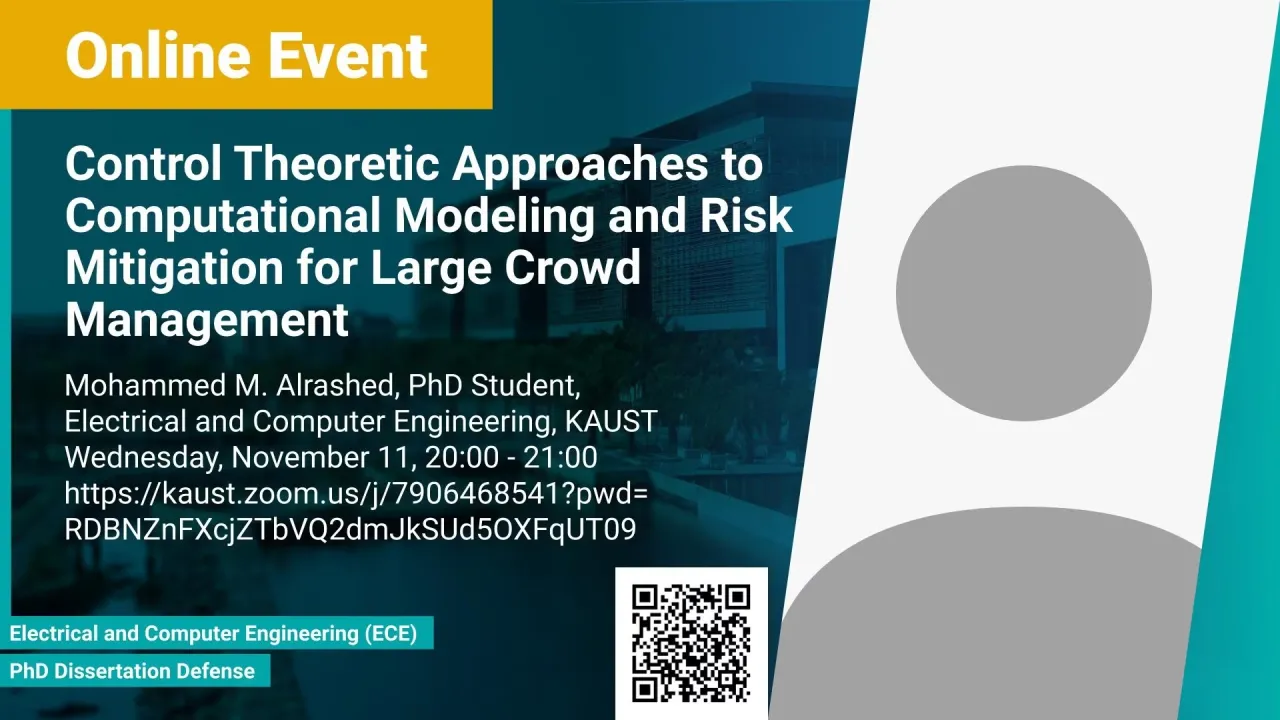
Control Theoretic Approaches to Computational Modeling and Risk Mitigation for Large Crowd Management
Overview
Abstract
We develop a computational framework for risk mitigation in high population density events. With an increased global population, the frequency of high population density events is naturally increased. Therefore, risk-free crowd management plans are critical for efficient mobility, convenient daily life, resource management, and most importantly mitigation of any inadvertent incidents and accidents such as stampedes. The status-quo for crowd management plans is the use of human experience/expert advice. However, most often such dependency on human experience is insufficient, flawed, and results in inconvenience and tragic events. Motivated by these issues, we propose an agent-based mathematical model describing realistic human motion and simulating large dense crowds in a wide variety of events as a potential simulation testbed to trial crowd management plans. The developed model incorporates stylized mindset characteristics as an internal drive for physical behavior such as walking, running, and pushing. Furthermore, the model is combined with a visualization of crowd movement. We develop analytic tools to quantify crowd dynamic features. The analytic tools will enable verification and validation of empirical evidence and surveillance video feed in both local and holistic representations of the crowd. This work addresses research problems in computational modeling of crowd dynamics, specifically: understanding and modeling the impact of a collective mindset on crowd dynamics versus mixtures of heterogeneous mindsets, the effect of social contagion of behaviors and decisions within the crowd, the competitive and aggressive pushing behaviors, and torso and steering dynamics.
Brief Biography
Mohammed Alrashed is a Ph.D. candidate in the Electrical and Computer Engineering department within the CEMSE division. He obtained his Bachelor of Science degree in Electrical Engineering from Umm Al Qura University in Mecca in 2014. He then got a Master's degree in Electrical Engineering from King Abdullah science and technology university in 2016.